Tunbridge, Vermont
| Tunbridge, Vermont | |
|---|---|
| Town | |
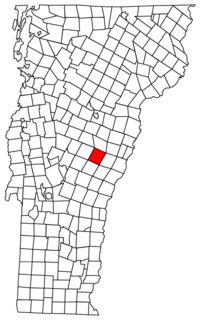 Located in Orange County, Vermont | |
 Location of Vermont with the U.S.A. | |
| Coordinates: 43°54′0″N 72°29′17″W / 43.90000°N 72.48806°WCoordinates: 43°54′0″N 72°29′17″W / 43.90000°N 72.48806°W | |
| Country | United States |
| State | Vermont |
| County | Orange |
| Chartered | 1761 |
| Settled | 1776 |
| Organized | 1786 |
| Area | |
| • Total | 44.8 sq mi (115.9 km2) |
| • Land | 44.7 sq mi (115.9 km2) |
| • Water | 0.04 sq mi (0.1 km2) 0.09% |
| Elevation | 600 ft (172 m) |
| Population (2000) | |
| • Total | 1,309 |
| • Density | 29.2/sq mi (11.3/km2) |
| • Households | 513 |
| • Families | 362 |
| Time zone | EST (UTC-5) |
| • Summer (DST) | EDT (UTC-4) |
| ZIP code | 05077 |
| Area code(s) | 802 |
| FIPS code | 50-73675[1] |
| GNIS feature ID | 1462231[2] |
| Website | www.tunbridgevt.com |
Tunbridge is a town in Orange County, Vermont, United States. As of the 2000 census, the town population was 1,309. The town consists of three village centers, all situated on Vermont Route 110 in the valley of the first branch of the White River. The three settlements are named North Tunbridge (also known locally as "Blood Village"), Tunbridge Village ("Market") and South Tunbridge ("Jigger").
History
The town of Tunbridge was created on September 3, 1761, by way of a royal charter which King George III of England issued to Governor Benning Wentworth of New Hampshire.
The name Tunbridge was chosen by Wentworth and most likely in honor of (or to gain favor with), the English noble William Henry Nassau de Zuylestein (1717-1781), fourth Earl of Rochford, Viscount Tunbridge, Baron Enfield and Colchester. De Zuylstein's secondary title is derived from the old "royal borough" of Tunbridge Wells (officially Royal Tunbridge Wells) in England.
Just before dawn on October 16, 1780, the town line of Tunbridge and Royalton was witness to the last major raid of the Revolutionary War in New England. In the "Royalton Raid" three hundred Indians led by British soldiers invaded from Canada along the First Branch of the White River. Part of a series of raids designed to terrorize frontier settlements, the result was the destruction of dozens of homes, crops and livestock necessary to survive the coming winter. Although women and girls were not harmed, 28 men and boys were taken captive and marched to Canada to be imprisoned. In the years that followed, many of the captives made their way back to their families, but some never returned. One resident, Peter Button, was killed in Tunbridge near the Royalton town line along what is Rte. 110 today; an historic marker has been erected there.
The first Tunbridge proprietors' meeting of which there is any record was held at the house of John Hutchinson on May 28, 1783. The minutes of this meeting show that others were previously held, but no records of them have been found. Elias Curtis was the first proprietors' clerk.
Historic sites
The entire center of Tunbridge Village, including the fairgrounds, was placed on the National Register of Historic Places in 1994. Officially the district listing is "Roughly, along VT 110 and adjacent rds. including Town Rd. 45 and Spring and Strafford Rds."
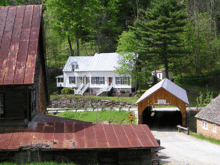
Tunbridge has five covered bridges (all listed on the National Register)
- Cilley Bridge – southwest of Tunbridge Village (off Howe Lane from VT 110)
- Flint Bridge – North Tunbridge on Bicknell Hill Road (off VT 110)
- Larkin Bridge – North Tunbridge on Larkin Road (off VT 110)
- Howe Bridge – South of Tunbridge Village (entering on VT 110) at Belknap Road
- Mill (or Hayward & Noble or Spring Rd.) Bridge —in the Village, west side of VT 110 on Spring Road
Tunbridge also has two other structures are individually listed on the National Register:
- Hayward & Kibby (or Hayward & Noble) Mill – on Spring Road in Tunbridge Village
- South Tunbridge Methodist Episcopal Church
Tunbridge World's Fair
The historical antecedent of the Tunbridge World's Fair can be traced to the town's charter, which therein authorized the establishment of two annual fairs when the population of the town reached fifty families.
It wasn't until 1867 that, after a succession of fairs in Orange County starting in 1847, the Tunbridge Agricultural Society was organized and staged a fair at the Elisha Lougee Farm in North Tunbridge. At the 1867 fair, Vermont's former Lieutenant Governor Burnham Martin referred to the fair as a "little World's Fair". Lewis Dickerman adopted the phrase and used it in the 1868 publicity handbills and the Tunbridge fair has since used the name.
In 1875, the Union Agricultural Society assumed the sponsorship of the fair and moved its location to the present fairgrounds in the center of Tunbridge.
In 1894, the fair joined the National Trotting Association, and for many years has maintained the only remaining grass race track in Vermont.
The annual fair continues to this day with demonstrations of farming and agricultural traditions and culture, working antique displays, horse and ox pulling, horse racing, cattle and horse shows, junior exhibits, floral and 4-H exhibits, contra dancing, gymkhana, and many free shows.
Geography and geology
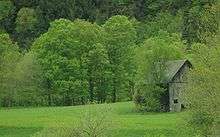
According to the United States Census Bureau, the town has a total area of 44.8 square miles (115.9 km2), of which 44.7 square miles (115.9 km2) is land and 0.04 square mile (0.1 km2) (0.04%) is water. The First Branch of the White River running north to south divides Tunbridge into two nearly equal parts. Two mineral springs exist in the town, one of which is a white sulphur spring located on "Spring road," one and a half miles from Tunbridge Center; this spring was once valued for its medicinal properties.
The highest points of land are Brocklebank Hill at 2100+ ft near the northern boundary with Chelsea, Old Hurricane Hill at 1900+ ft in the northwestern part near East Randolph, and East Hill at 2112 ft near the Strafford line. The soil is well-drained and was formed in Wisconsin-age glacial till, its average depth is around 20 to 40 inches. Typical composition of the soil is; a surface layer of very dark brown, partially decomposed organic material, a subsurface layer of gray fine sandy loam, upper subsoil of dark brown fine sandy loam and subsoil of brown channery fine sandy loam. The rocks underlying Tunbridge are entirely of the calciferous mica schist formation, with a small bed of granite, syenite and protogine in the northeastern part.
No. 9 of the Acts of 1985, effective March 27, 1985, designated the Tunbridge Soil Series as the official State Soil. The Tunbridge series (course-loamy, mixed, frigid Typic Haplothrod) consists of moderately deep to bedrock, well drained soils. It was selected from among more than 160 different soil series in the state. As it is a typical "hill farm" and "sugarbush" soil, the Tunbridge series well represents the soil resources of Vermont. A soil formed in loamy glacial till, it has good potential for agriculture and forestry. As Professor Richmond Bartlett of UVM says, "It's the soil that makes Vermont hills greener than those either in New Hampshire or New York."
---From Office of the Secretary of State, Vermont Legislative Directory and State Manual, Biennial Session, 1993–1994, p. 16.
Typical species of tree to be found in the landscape are white birch, yellow birch, American beech, red spruce, red maple, sugar maple, white ash, hemlock and white pine.
Demographics
| Historical population | |||
|---|---|---|---|
| Census | Pop. | %± | |
| 1790 | 487 | — | |
| 1800 | 1,314 | 169.8% | |
| 1810 | 1,640 | 24.8% | |
| 1820 | 2,003 | 22.1% | |
| 1830 | 1,920 | −4.1% | |
| 1840 | 1,811 | −5.7% | |
| 1850 | 1,786 | −1.4% | |
| 1860 | 1,546 | −13.4% | |
| 1870 | 1,405 | −9.1% | |
| 1880 | 1,252 | −10.9% | |
| 1890 | 1,011 | −19.2% | |
| 1900 | 885 | −12.5% | |
| 1910 | 918 | 3.7% | |
| 1920 | 907 | −1.2% | |
| 1930 | 903 | −0.4% | |
| 1940 | 882 | −2.3% | |
| 1950 | 774 | −12.2% | |
| 1960 | 743 | −4.0% | |
| 1970 | 791 | 6.5% | |
| 1980 | 925 | 16.9% | |
| 1990 | 1,154 | 24.8% | |
| 2000 | 1,309 | 13.4% | |
| 2010 | 1,284 | −1.9% | |
| Est. 2014 | 1,286 | [3] | 0.2% |
| U.S. Decennial Census[4] | |||
As of the census[1] of 2000, there were 1,309 people, 513 households, and 362 families residing in the town. The population density was 29.3 people per square mile (11.3/km2). There were 679 housing units at an average density of 15.2 per square mile (5.9/km2). The racial makeup of the town was 99.01% White, 0.23% African American, 0.08% Native American, 0.15% Asian, and 0.53% from two or more races. Hispanic or Latino of any race were 0.99% of the population.
There were 513 households out of which 31.0% had children under the age of 18 living with them, 55.0% were couples living together and joined in either marriage or civil union, 11.3% had a female householder with no husband present, and 29.4% were non-families. 21.1% of all households were made up of individuals and 8.4% had someone living alone who was 65 years of age or older. The average household size was 2.55 and the average family size was 2.94.
In the town the population was spread out with 25.4% under the age of 18, 5.1% from 18 to 24, 31.5% from 25 to 44, 24.8% from 45 to 64, and 13.2% who were 65 years of age or older. The median age was 38 years. For every 100 females there were 99.5 males. For every 100 females age 18 and over, there were 95.4 males.
The median income for a household in the town was $40,855, and the median income for a family was $45,670. Males had a median income of $27,465 versus $23,182 for females. The per capita income for the town was $19,934. About 8.4% of families and 12.1% of the population were below the poverty line, including 17.8% of those under age 18 and 8.3% of those age 65 or over. the unemployment rate is 3.2% and the average commute time is 26.9 minutes.
84.9% of the Tunbridge population studied at high school level or higher and 25.8% have studied at bachelors level or higher.
Notable people
- Sarah E. Buxton, member, Vermont House of Representatives
- David M. Camp, Lieutenant Governor of Vermont, 1836-1841
- Susan Dollenmaier, founder of Anichini
- Frank A. Haskell, colonel in the Union Army and author of an account of the Battle of Gettysburg
- Harry David Lee, founder of Lee Jeans
- Solomon Mack, Veteran of the French and Indian War and American Revolution, grandfather of Joseph Smith, Jr.
- Stephen Mack, merchant and politician
- John O'Brien, film maker and director
- Hyrum Smith, leader in the early Latter Day Saint movement
- Joseph Smith, Sr., father of Joseph Smith, Jr. and first Presiding Patriarch in the Latter Day Saint movement
- Samuel Harrison Smith, missionary
- Fred Tuttle, farmer, movie actor, candidate for political office
Local resources
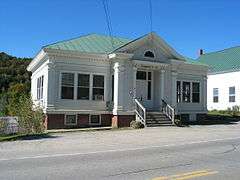

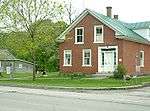
Town Clerk's Office
PO Box 6
Tunbridge, VT 05077
(802) 889-5521
Monday-Friday 9:30am-Noon & 1:00 pm–4:00 pm
Tunbridge Historical Society
Euclid Farnham, President
24 The Crossroad, Tunbridge, VT, 05077
(802) 889–3458
Tunbridge Library
Route 110, Tunbridge, VT, 05077
(802) 889-9404
Sun:11:30 am–1:30 pm Mon:3pm-8pm Weds:6pm-8pm Fri:2pm-6pm Sat:10am-4pm
(Closed Tuesday & Thursday)
Tunbridge Congregational Church
Route 110, Tunbridge, VT, 05077
Pastor: Rev. David Wolfe
(802) 889-5577
Tunbridge Central School
523 Route 110, North Tunbridge, VT, 05077
(802) 889–3310
Cemeteries
Dates represent years in use.
- Button: 1780–present
- Dickerman Hill: 1807–1934
- Drew: 1814–1881
- Durkee: 1812–1981
- Hunt: 1802–present
- Hutchinson: 1788–1923
- Hutchinson Lot: 1844–1860
- Kelsey Mt.: 1792–1921
- Monarch Hill: 1814–1876
- Mt. Pleasant: 1798–1982
- Old Meeting House: 1816–1940
- Ordway: 1813–1893
- Riddall: 1818–1820
- Smith: 1807–1881
- Spring Road (new): 1842–present
- Spring Road (old): 1831–1885
- Strafford Road: 1800–1968
- Tunbridge Village: 1807–present
- Ward Hill: 1804–1884
- Whitney Hill: 1809–1915
References
- 1 2 "American FactFinder". United States Census Bureau. Retrieved 2008-01-31.
- ↑ "US Board on Geographic Names". United States Geological Survey. 2007-10-25. Retrieved 2008-01-31.
- ↑ "Annual Estimates of the Resident Population for Incorporated Places: April 1, 2010 to July 1, 2014". Retrieved June 4, 2015.
- ↑ "U.S. Decennial Census". United States Census Bureau. Retrieved May 16, 2015.
External links
- Tunbridge Vermont Official Town Website
- Tunbridge World's Fair official website
- Bellwether Films, Producers of "The Tunbridge Trilogy"
- Tunbridge Then and Now – Landscape change program at UVM
 |
Brookfield, Vermont | Chelsea, Vermont | Vershire, Vermont |  |
| Randolph, Vermont | |
Strafford, Vermont | ||
| ||||
| | ||||
| Bethel, Vermont | Royalton, Vermont | Sharon, Vermont |
